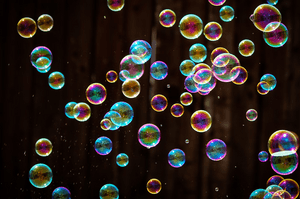Introduction
Bubble Bratz Bubbles are a fascinating phenomenon enjoyed by people of all ages. They captivate with their delicate, shimmering surfaces and ephemeral nature. This guide will explore the science, art, and fun of bubbles, providing you with everything you need to know to enjoy and understand them.
The Science of Bubbles
1. What Are Bubbles?
Definition: Bubbles are thin films of soapy water filled with air or gas.
Formation: Bubbles form when soap molecules reduce the surface tension of water, allowing a thin film to stretch around a pocket of air.
2. Surface Tension and Soap Molecules
Surface Tension: The force that makes the surface of a liquid behave like a stretched elastic sheet.
Role of Soap: Soap reduces surface tension, making it easier to form bubbles. Soap molecules have hydrophilic (water-attracting) and hydrophobic (water-repelling) ends, which stabilize the bubble film.
3. Colors in Bubbles
Interference of Light: The colors seen in bubbles are due to the interference of light waves reflecting off the inner and outer surfaces of the bubble film.
Thickness of Film: The varying thickness of the bubble film creates different colors as the light waves interfere constructively or destructively.
Making Bubbles
1. Basic Bubble Solution
Ingredients: Water, dish soap, and glycerin or corn syrup.
Recipe: Mix 6 cups of water, 1 cup of dish soap, and 1/4 cup of glycerin or corn syrup. Let it sit for a few hours for best results.
2. Bubble Wands
Store-Bought Wands: Available in various shapes and sizes.
DIY Wands: Use items like straws, string, or wire to create custom bubble wands.
3. Giant Bubbles
Special Solutions: Increase glycerin or corn syrup for stronger, longer-lasting bubbles.
Techniques: Use large wands or loops of string to create massive bubbles.
Fun with Bubbles
1. Bubble Activities for Kids
Bubble Blowing: Simple and fun, using a bubble wand and solution.
Bubble Art: Dip wands in colored solutions and blow bubbles onto paper to create unique artwork.
Bubble Races: See whose bubble lasts the longest or travels the furthest.
2. Bubble Science Experiments
Surface Tension Experiments: Use pepper and soap to visualize how soap reduces surface tension.
Bubble Shapes: Explore how different shaped wands affect the shape of bubbles.
3. Bubble Performances
Professional Shows: Watch bubble artists create stunning bubble displays.
DIY Performances: Learn tricks like blowing bubbles inside bubbles or creating bubble sculptures.
Bubble Safety
1. Non-Toxic Solutions
Safe Ingredients: Use dish soap that is non-toxic and safe for children.
Avoid Ingestion: Remind children not to drink the bubble solution.
2. Safe Play Environment
Indoor Safety: Play on surfaces that can be easily cleaned and are not slippery when wet.
Outdoor Safety: Choose open, wind-free areas to prevent bubbles from blowing into eyes or causing accidents.
Conclusion
Bubbles bring joy and wonder, offering endless opportunities for play, learning, and creativity. Whether you’re exploring the science behind them, creating beautiful art, or just having fun, bubbles are a delightful way to engage with the world around you. Enjoy the magic of bubbles and let your imagination soar!
For More Read Our Blog on
https://chandapai.blogspot.com/2024/07/believing-these-7-myths-about-jug-keeps.html
